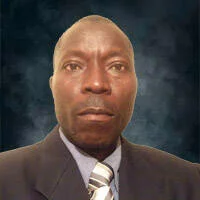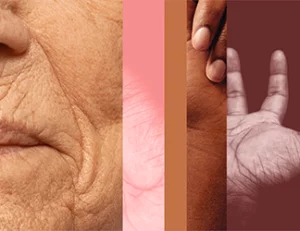The Dhongo form an ethno-linguistic group who live in the Territoire (County) of Faradje in the Haut-Uélé District in the Democratic Republic of Congo. They are neighbors of my Lugbara people and share some “experiences” of witchcraft with this Lugbara people that I previously mentioned, in my “Aula: A Baby Disease Caused by a Witch.”
In the Dhongo village named Lanza, there is a big tree located at the shore of river Kibali. That tree is used as a test of witchcraft. “A witch who eats its bark dies on the spot. But, anyone who is not a witch can eat it at the same time and not die. The tree is called malimba.” I was told this by a theological school student who is himself a Dhongo. (I plan to visit the tree once the student goes back into his village, and get its leaves, roots and pictures for its systematic identification.) The reason I introduce my story by this information is the challenge of confirming witchcraft when one is accused.
A pastor in my church’s denomination (Protestant and evangelical) was accused of being a witch. I will call him Reverend Kabeya. I heard of this accusation for the first time in 2001. Until today, he has never been exonerated. On the contrary, his wife is also accused of witchcraft. I worked with him in a Christian ministry. I slept many times in his house; I ate the food cooked by his wife. I did not have the opportunity to prove or disprove what people said about him.
News of Reverend Kabeya’s witchcraft accusation spread in the entire region to the point that one day a member of the church where he served as assistant pastor told him face to face, “We do not want you here, go away with your witchcraft!” Some people wondered how I was able to work with him without being harmed. Others explained that since I was quite well known, if he had tried to harm me, then my entire community would have reacted. Thus he knew better than to try and harm me.
A Verdict That Demands Evidence
I asked for evidence supporting their claim. Some people, Christian believers, said that Reverend Kabeya consulted a witchdoctor for professional promotion, but that unfortunately the medicine he was given turned him into a witch. Others said that one day Reverend Kabeya and his wife offered food to a neighbor who did not eat it, but instead threw it in a pit latrine. The next day that neighbor reportedly found that the pit had collapsed. (In this area, people believe that poisoned food, when thrown in a pit, causes it to collapse; it can also cause the grass in that place to dry, or the spot where the food was dropped can be hit by a lightning, etc.)
In Reverend Kabeya’s case, the ‘story’ of the collapse went round. Since that time, this accusation against him has been widely repeated and accepted. I felt deeply sorry for the moral tortures he went through.
What actually happened more than a decade ago with this latrine is widely “known” and repeated, because “that is what everybody says,” a repetition that itself is now counted as evidence. One day, when I pressed for evidence, I was told, “How can we get tangible evidence for a supernatural phenomenon?” Such a question was simply meaning, “Just believe and trust ‘the story’ you are told! No one will ever be able to give you evidence in this matter. You should not expect evidence.”
As I report this case of witchcraft accusation, many more cases I have heard of come into my mind: many other pastors, deacons and deaconesses, church leaders, choirs members, children and old people, men and women, and so on. To put it another way, I have not yet heard of any demographic with a member that has never been accused of witchcraft. Nobody seems to be concerned that people accused of witchcraft are continuing to serve in different honorable positions in the church.
The Search for Scientific Assessment of Folk Evidences
Coming back to the malimba tree used by the Dhongo people, I wonder whether there will ever be empirical ways of testing witchcraft, as the Dhongo believe. Another pastor from one of the ethnic groups surrounding Bunia town told me, as evidence of witchcraft, a similar story. When he was a child in the Territoire (County) of Irumu, together with other children, they knew about the skin of an animal that chases away witches. When women would be returning from the market, they would put that skin on their path leading back to the village. They would detect witches by looking at women who would walk round the spot where the skin is placed. Another guy who was listening to this last sort of evidence added, if you put that skin on the wall inside your house, witches will not enter into your house. Anyone who avoids systematically entering into your house, using different excuses, could probably be a witch.
A way forward in the debate on witchcraft could also be a long-term research labeled a ‘quest for empirical evidences’ or ‘scientific assessment of folk evidences’.





Comments
Be the first one to make a comment!